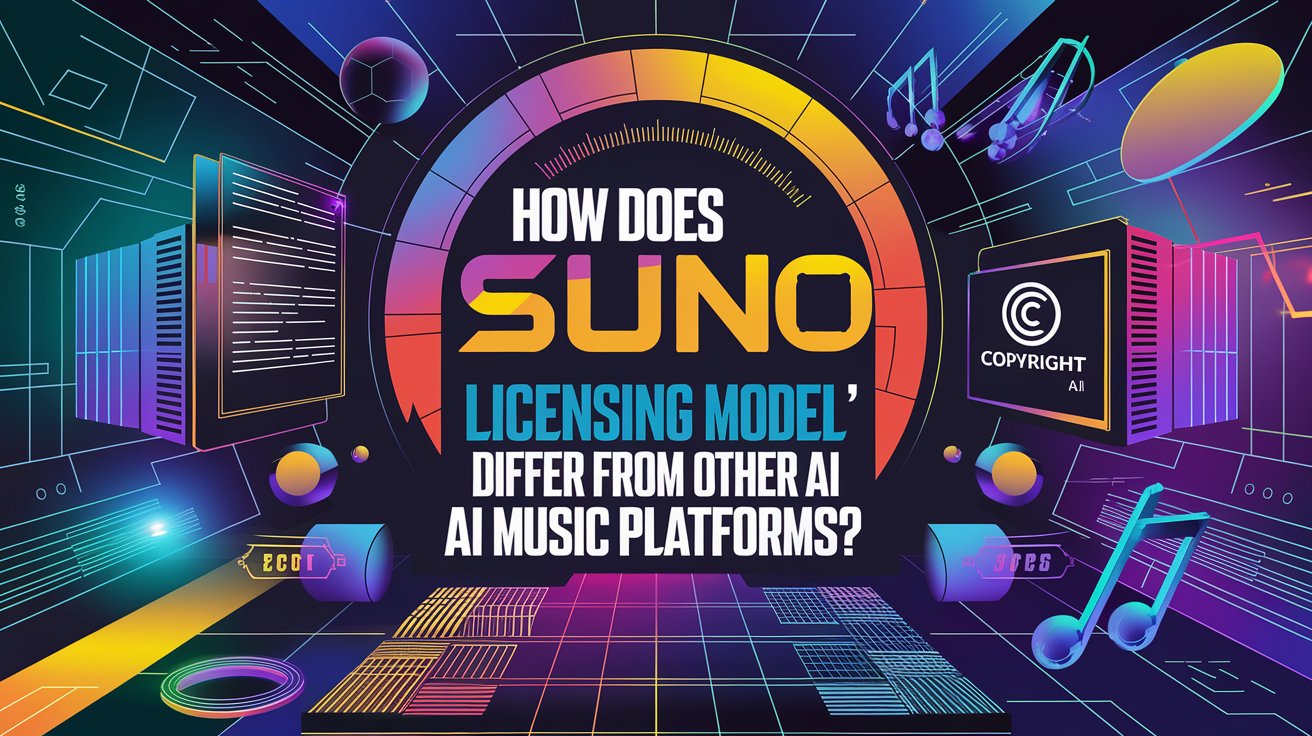Suno AI has emerged as a leading AI music generation platform, but its licensing model operates differently from competitors in key areas. While most AI music tools focus on user accessibility or technical capabilities, Suno’s approach to rights management, commercial usage, and platform-specific restrictions creates distinct advantages and challenges.
Ownership and Usage Rights
Suno’s tiered ownership model stands out:
- Free users don’t own generated songs and must credit Suno when sharing.
- Paid subscribers (Pro/Premium tiers) gain full ownership and commercial rights, including distribution on Spotify/Apple Music.
Comparisons:
| Platform | Free Plan Ownership | Paid Plan Ownership | Commercial Use |
|---|---|---|---|
| Suno AI | No | Full ownership | Allowed (paid) |
| AIVA | Limited (3 tracks) | Full (Pro plan) | Pro plan only |
| Udio | Restricted | Partial | With attribution |
| Beatoven.ai | Rights vary | Licensed dataset | Yes (licensed) |
Unlike Udio and AIVA, which impose stricter attribution rules, Suno removes these requirements for paying customers. However, platforms like Beatoven.ai prioritize ethical sourcing through fully licensed training data.
Commercialization and Restrictions
Suno enables direct monetization for paid users:
- Uploads to streaming platforms
- YouTube monetization
- TV/film licensing
Key limitations:
- Free-tier songs contain watermarks
- Cannot edit vocals in generated tracks
- No stem exports for remixing
In contrast, tools like BandLab allow post-generation editing of tempo/key signatures, while Mubert focuses on royalty-free tracks for content creators. Soundful requires additional fees for commercial projects, creating a less streamlined path to monetization.
Training Data and Legal Risks
Suno faces ongoing lawsuits from record labels and GEMA alleging:
- Unlicensed use of copyrighted songs in training data
- Outputs that mimic protected works too closely
This contrasts with platforms like Beatoven.ai, which uses 3 million licensed tracks and shares revenue with rights holders. Google’s MusicLM avoids these issues by training exclusively on YouTube content it legally controls.
Subscription Structure
Suno’s credit system shapes user experience:
- Free plan: 50 daily credits (1 credit = 2-minute song)
- $10/month: 500 credits + watermark-free tracks
- Enterprise plans: Custom pricing
Alternate models:
- Soundful: Free tier with 10 downloads/month
- Rightsify: Hybrid licensing (flat fees + revenue share) for businesses
- Mubert: Pay-per-track marketplace
Industry Impact and Criticism
Proponents argue Suno’s model democratizes music creation, but critics highlight:
- Potential devaluation of human-composed music
- Lack of artist compensation for training data use
- Legal gray areas around derivative works
The RIAA calls Suno’s approach “industrial-scale infringement,” while licensed alternatives like Beatoven.ai position themselves as ethically superior.
The Road Ahead
As lawsuits progress, Suno may need to adopt elements from competitors:
- Revenue sharing models (like Rightsify)
- Transparent training data disclosures (per Generative AI Copyright Act)
- Artist opt-out mechanisms (proposed by GEMA)
For now, Suno’s blend of low-cost access and commercial freedom makes it popular among indie creators, despite mounting legal pressures. Its ability to balance innovation with rights holder interests will likely determine its longevity in an industry increasingly wary of unlicensed AI content.



